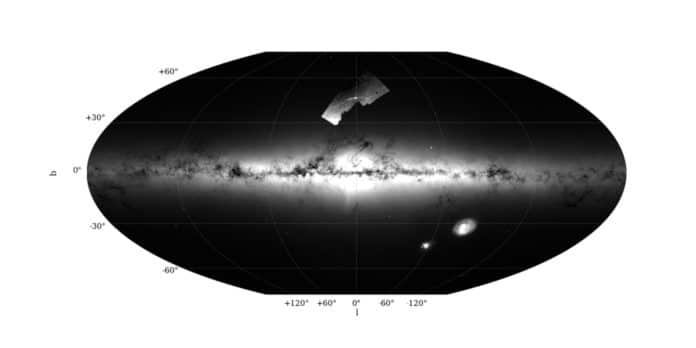Palomar 5 is a globular cluster that lies in the halo of the Milky Way galaxy. Many stars live in this clause in the form of a stellar stream. The stream has a mass of 5000 solar masses and is 30,000 light-years long.
Recently, an international team of astronomers and astrophysicists led by the University of Barcelona has discovered a large black hole population of more than 100 black holes in the cluster center. This population of Supra-massive black hole prompt distinguishing features of Palomar 5.
Prof Mark Gieles, from the Institute of Cosmos Sciences of the University of Barcelona (ICCUB) and lead author of the paper, said, “The number of black holes is roughly three times larger than expected from the number of stars in the cluster, and it means that more than 20% of the total cluster mass is made up of black holes. They each have a mass of about 20 times the mass of the Sun, and they formed in supernova explosions at the end of the lives of massive stars when the cluster was still very young.”
“In the last few years, nearly thirty thin streams have been discovered in the Milky Way halo. We do not know how these streams form, but one idea is that they are disrupted star clusters. However, none of the recently discovered streams have a star cluster associated with them; hence we can not be sure. So, to understand how these streams formed, we need to study one with a stellar system associated with it. Palomar 5 is the only case, making it a Rosetta Stone for understanding stream formation, and that is why we studied it in detail.”
To study the initial properties of the cluster, scientists created a simulation of the orbits and the evolution of each star from the formation of the cluster until the final dissolution. They varied the properties until a good match with observations of the stream and the cluster was found.
It was found that the cluster was formed with a lower black hole fraction, but stars escaped more efficiently than black holes, such that the black hole fraction gradually increased.
The black hole powerfully puffed up the cluster in gravitational slingshot interactions with stars, which prompted significantly additional getting away from stars and the formation of the stream.
Giles said, “We have shown that the presence of a large black hole population may have been common in all the clusters that formed the streams. This is important for our understanding of globular cluster formation, the initial masses of stars, and the evolution of massive stars. This work also has important implications for gravitational waves.”
Journal Reference:
- Gieles, M., Erkal, D., Antonini, F. et al. A supra-massive population of stellar-mass black holes in the globular cluster Palomar 5. Nat Astron (2021). DOI: 10.1038/s41550-021-01392-2
